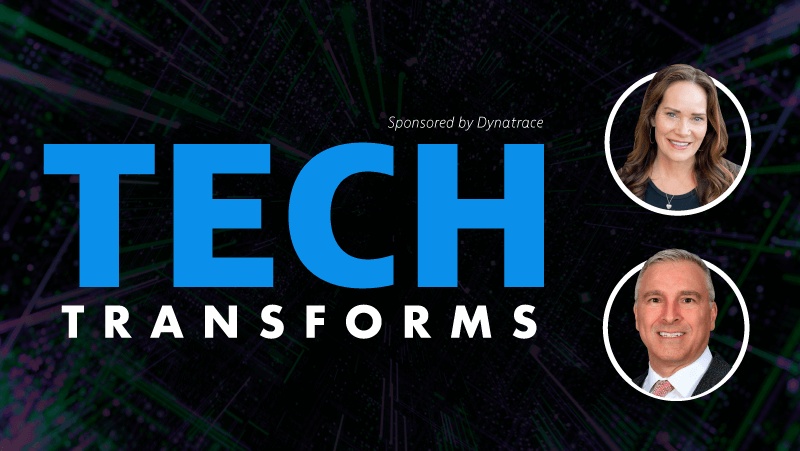At the AWS re:Invent 2023 conference, generative AI is a centerpiece. The first goal is to demonstrate how generative AI can bring key business value and efficiency for organizations. Second, the conference will outline some of the critical risks in using generative AI.
Today’s IT organizations face unprecedented challenges. While technologies have enabled new productivity and efficiencies, customer expectations have grown exponentially, cyberthreat risks continue to mount, and the pace of business has sped up.
Increasingly, organizations are turning to technologies such as generative AI to become more productive, efficient, and agile as the pace of business quickens. Generative AI enables organizations to use large language models (LLMs) to autonomously create content, answer queries, and more.
This ability to use IT automation to generate business value could massively improve organizational productivity, freeing human workers to apply their efforts to higher-level tasks. According to Harvard Business Review, generative AI could boost overall global productivity by some 7% annually over a 10-year period.
What’s more, in the McKinsey report “The State of AI 2023,” 40% of respondents say their organizations will increase their overall AI investment because of advances in generative AI.
In this AWS re:Invent 2023 guide, we explore the role of generative AI in the issues organizations face as they move to the cloud: IT automation, cloud migration and digital transformation, application security, and more.
Read on to learn more about generative AI, causal AI, predictive AI, and how the AWS platform, alongside observability, promotes digital transformation, cloud modernization, and cloud migration without compromising application performance and security.
AWS re:Invent 2023: IT automation in AWS environments through a multipronged AI approach
In almost every industry, generative AI has become a key topic. It’s being recognized around the world as a transformative technology for delivering productivity gains. Although generative AI is still in the early stages and comes with risks, it has the potential to transform industries. Its many advantages include improving customer service and increasing employee productivity.
In general, generative AI can empower AWS users to further accelerate and optimize their cloud journeys. Across the cloud operations lifecycle, especially in organizations operating at enterprise scale, the sheer volume of cloud-native services and dynamic architectures generate a massive amount of data. As a result, this volume and complexity can slow down proactive and efficient cloud management operations. Moreover, at such a scale, manual correlation efforts to pinpoint the root cause of issues are impossible to sustain.
However, with a generative AI solution and strategy underpinning your AWS cloud, not only can organizations automate daily operations based on high-fidelity insights pulled into context from a multitude of cloud data sources, but they can also leverage proactive recommendations to further accelerate their AWS usage and adoption.
Generative AI brings data quality risks
But generative AI also brings risks in terms of data quality.
Organizations are increasingly recognizing that the quality of generative AI output is only as good as the quality of its data input. As a result, LLMs need accurate, high-quality, contextualized data to ensure that the conclusions it generates are accurate and high quality.
To solve this problem, organizations can use causal AI and predictive AI to provide that high-quality input.
Causal AI is an artificial intelligence technique used to determine the precise underlying causes and effects of events. Using fault-tree analysis, this kind of AI provides critical detail about how its models arrive at a given conclusion. These details enable reliable generative AI recommendations. Predictive AI uses advanced algorithms to analyze large data sets to identify potential issues or opportunities, enabling proactive actions to prevent problems or capitalize on opportunities.
These three types of AI used together enable more effective IT automation than a single form of AI on its own.
Effectively automating IT processes is key to addressing the challenges of complex cloud environments. Without IT automation, teams can’t keep up with the volume of routine tasks. Relying on manual processes results in outages, increased costs, and frustrated customers. Ultimately, IT automation can deliver consistency, efficiency, and better business outcomes for modern enterprises.
Multipronged AI resources
The following resources provide a thorough look into how a multipronged AI approach helps organizations achieve reliable IT automation in cloud environments faster.
 |
Tech Transforms podcast: It’s time to get familiar with generative AI – podcast
On the Tech Transforms podcast, sponsored by Dynatrace, we talk to some of the most prominent influencers shaping critical government technology decisions. |
 |
What is artificial intelligence? – knowledge base
While machine learning and AI offer similar benefits, they’re not the same. So, what is artificial intelligence? Discover how it differs from machine learning for IT operations and more. |
 |
The path to achieving unprecedented productivity and software innovation through ChatGPT and other generative AI – blog
Paired with causal AI, organizations can increase the impact and safer use of ChatGPT and other generative AI technologies. |
 |
What is causal AI? Why this deterministic AI approach is critical to business success – blog
Today’s organizations need to go beyond a traditional, correlation-driven approach to identify the underlying causes and effects of an event or behavior and drive better DevOps automation. Enter causal AI. |
 |
Achieving business resilience with modern observability, AI, and automation – blog
Organizations need a technology foundation that promotes business resilience, agility, and flexibility. Some technologies are particularly key to support these goals, such as cloud observability, workflow automation, and artificial intelligence. |
 |
Cloud observability delivers on business value – blog
Cloud observability enables organizations to deliver business value by reducing costs, minimizing IT incidents, and providing better user experiences, as CEO Rick McConnell outlined at the recent Innovate conference. |
 |
What is predictive AI? How this data-driven technique gives foresight to IT teams – blog
By analyzing patterns and trends, predictive analytics enables teams to take proactive actions to prevent problems or capitalize on opportunities. |
 |
What is AIOps? An insider’s guide to AI for ITOps — and beyond – blog
As organizations embrace automation in place of time-consuming, manual processes, many turn to artificial intelligence for IT operations, or AIOps. But what is AIOps, exactly? Are all AI and AIOps approaches the same? And how can it support your organization? |
 |
IT automation: An AIOps guide – guide
AIOps is an IT approach that applies artificial intelligence to IT operations, bringing process efficiencies to organizations. Learn more about the benefits of AIOps in this AIOps guide. |
 |
Applying real-world AIOps use cases to your operations – blog
The benefits of AIOps include enhanced automation and accelerated digital transformation. But how can you apply AIOps use cases to address your real-world operations issues? |
AWS re:Invent 2023: Cloud migration and digital transformation with observability
For IT teams seeking agility, cost savings, and faster innovation, a cloud migration strategy is critical. Cloud migration to AWS and other cloud environments enables IT teams to enlist public cloud infrastructure so they can innovate without getting entrenched in managing IT infrastructure as the organization scales.
But, as resources move off premises, IT teams can lose visibility into system performance and security issues. IT operations teams need ways to monitor infrastructure, even if it’s not within their data centers and under their direct management. A modern observability platform enables teams to gain the benefits of cloud infrastructure while retaining visibility.
Cloud migration and digital transformation resources
Check out the following resources for details about cloud migration and digital transformation best practices.
 |
5 Steps to accelerate your cloud migration with Dynatrace – blog
Learn how Dynatrace can help you reduce risk, move faster, and achieve a better business outcome for your cloud migration project. |
 |
Plan, execute, and monitor your cloud migration for sustained success – eBook
Cloud migration introduces complexity that requires an observability platform. See how to use Dynatrace in your cloud migration strategy. |
 |
What is application modernization? How to pick an application modernization strategy – knowledge base
What is application modernization? Learn what it is and how to craft an application modernization strategy that works for your organization. |
 |
Wiley accelerates digital transformation to enable seamless access to research and education content globally with Dynatrace – customer story
Wiley accelerates digital transformation to enable seamless access to research and education content globally with Dynatrace. |
 |
What is cloud migration? – knowledge base
Like any move, cloud migration requires a lot of planning and preparation–but it can also transform how you deliver value to your customers. |
 |
Accelerate cloud migration: How to modernize faster with Dynatrace – video
Watch this tutorial and learn hands-on from Lucas Hocker and Kayla Bondy how Dynatrace helps you migrate better to the cloud. |
 |
Data lakehouse innovations advance the three pillars of observability for more collaborative analytics – blog
How do you get more value from petabytes of exponentially exploding, increasingly heterogeneous data? The short answer: The three pillars of observability—logs, metrics, and traces—concentrated in a data lakehouse. |
 |
AIOps for cloud observability: How to simplify complexity and automate CloudOps – blog
Automation and AIOps for cloud-native environments can help IT pros prioritize issues and reduce false-positive alerts. |
Application security in the cloud at AWS re:Invent 2023
Runtime security vulnerabilities, if discovered in a customer-facing product environment, are far more costly to an organization than if they’re caught in earlier stages of development. The impact of runtime vulnerabilities ranges from lost revenue to compromised data to defecting customers. Additionally, organizations’ efforts to remediate a vulnerability or attack in a production environment takes a toll on security teams as they scramble to find all affected applications, systems, and data.
As cloud-native architectures become the backbone of modern digital experiences, the massive data volumes these environments generate make managing application security more challenging. Traditional cloud monitoring, observability, and security approaches that rely on fractured tool sets and manual processes lack data context and fall short.
To address these challenges, organizations need an approach to observability, analytics, and application security that can scale with cloud-native environments. An observability monitoring solution that combines AI, analytics, and application security with a massively parallel processing data lakehouse gives operations and security teams access to forensics-quality data. With this awareness, teams can automatically identify vulnerabilities and prioritize which ones to address first. As a result, they can respond to security exploits in real time and investigate the effects of security attacks.
Application security resources
The following resources illustrate how runtime application security and log forensics keep applications running in cloud environments secure and help teams speed up and automate security incident response.
 |
Proactive runtime security transforms releases on AWS – blog
Runtime security vulnerabilities, if discovered in a customer-facing product environment, are far more costly to an organization than if they’re caught in earlier stages of development. |
 |
Vulnerability remediation accelerated for one company on AWS, enabling faster, more secure releases – blog
Learn how vulnerability remediation has enabled one company on AWS to consistently deliver more releases faster and more securely. |
 |
Application security fuels secure digital transformation for a global energy leader – blog
Learn how this global energy leader achieved a secure digital transformation with confidence when migrating to AWS. |
 |
What is cloud application security? – blog
What is cloud application security? In this guide, we’ll examine the changes, challenges, and opportunities of evolving cloud security solutions. |
 |
Dynatrace Application Security automatically detects and blocks attacks in real time – blog
Dynatrace has enhanced its Application Security Module to provide real-time, automatic attack detection and blocking. |
 |
Intelligent cloud-native security with Dynatrace and Snyk – webinar
Learn about the importance of security in your cloud-native deployments, best practices for building this into your processes and tech stack, and how to shift from reactive to proactive to prevent vulnerabilities from being introduced into production. |
 |
Empowering data to deliver contextual analytics with Dynatrace Grail and AWS – article
Readers will gain a comprehensive understanding of how Dynatrace Grail and AWS can work together to optimize performance, increase efficiency, and ensure the reliability of applications and services in the cloud environment. |
 |
TTP-based threat hunting with Dynatrace Security Analytics and Falco Alerts solves alert noise – blog
Analysts are turning to AI and TTP-based threat-hunting techniques to uncover how attackers are trying to exploit their environments. |
 |
Log auditing and log forensics benefit from converging observability and security data – blog
Converging observability and security data gives security teams end-to-end visibility into application security issues for real-time answers at scale. |
 |
Log forensics: Finding malicious activity in multicloud environments with Dynatrace Grail – blog
Organizations are increasingly turning to cloud environments to stay competitive, remain agile, and grow. |
 |
Dynatrace unveils Security Analytics to elevate threat detection, forensics, and incident response – blog
Dynatrace Security Analytics, a new solution on the Dynatrace platform, enables threat detection, forensics, and incident response using combined security and observability context across the full stack. |
 |
Security by design enhanced by unified observability and security – blog
Business spend management company Soldo uses unified observability and security to implement efficient security-by-design and DevSecOps practices. |
AWS re:Invent 2023: AWS and Dynatrace accelerate modernization for achieving digital transformation goals
With broad and deep support of the AWS ecosystem, Dynatrace enables customers to build a strong and scalable foundation for their end-to-end cloud operations. Dynatrace also helps organizations adopt and optimize AWS and other cloud technologies to meet their digital transformation goals.
Organizations worldwide increasingly embrace AWS to drive their modernization and digital transformation initiatives. These initiatives generate enormous volumes of observability and security data. The Dynatrace platform unifies this data and leverages advanced analytics and AIOps capabilities to deliver precise answers and intelligent automation that enable customers to maximize the performance of their cloud-based services.
Because of this dynamic partnership, organizations around the world can deliver flawless and secure digital experiences through Dynatrace and AWS.
Dynatrace and AWS resources
Check out the following resources to learn more about how Dynatrace and AWS work better together.
 |
Why modern, well-architected AWS clouds demand AI-powered observability – whitepaper
Cloud observability at every phase of the AWS modernization journey is critical to provide insights and intelligence that drive greater adoption of AWS technologies in a faster, more secure way. |
 |
Unleash the power of AWS Services through next-generation observability – video
Learn why observability of AWS environments is critical to architecting, building, and running performatively on AWS and how Dynatrace provides additional insights and optimizations. |
 |
AWS and Dynatrace work better together – video
Every cloud provider provides different technologies and services. Learn how Dynatrace integrates simply with AWS and the roadmap for more AWS integrations. |
 |
Dynatrace achieves AWS cloud operations competency for monitoring and observability – press release
Dynatrace announces it has achieved the new Amazon Web Services (AWS) Cloud Operations Competency in the Monitoring and Observability category. |
 |
Accelerate your cloud journey with Dynatrace observability for AWS S3 logs – blog
The AWS S3 storage location can now be easily integrated with Dynatrace Grail™ data lakehouse, so you can answer any question at any time using log data and avoid the complexity of storage management. |
 |
Dynatrace supports Amazon Linux 2023 as an AWS launch partner – blog
Amazon Linux 2023 provides a secure, stable, and high-performance execution environment to develop and run cloud applications. |
 |
Analyze all AWS data in minutes with Amazon CloudWatch Metric Streams available in Dynatrace – blog
Amazon CloudWatch metrics pulls data from various services that run on AWS. Dynatrace ingests this data to perform root-cause analysis. |
 |
Implementing AWS well-architected pillars with automated workflows – blog
Ensure the performance of AWS well-architected pillars, and similar frameworks from Azure and GCP, with Dynatrace Site Reliability Guardian. |
 |
Modernize your agency with AWS monitoring – webpage
Automatic & intelligent observability for cloud native and hybrid environments — simplifies cloud complexity — easy, automatic, AI-powered. |





Looking for answers?
Start a new discussion or ask for help in our Q&A forum.
Go to forum